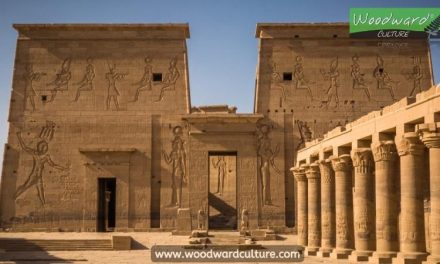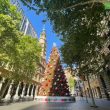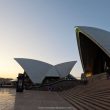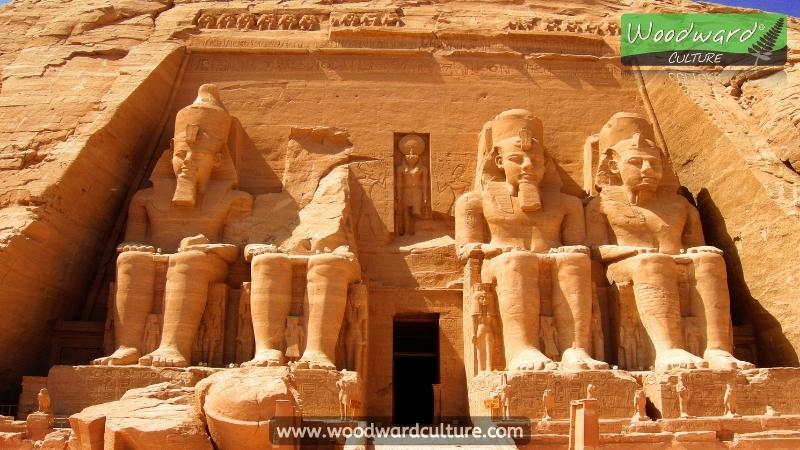
Abu Simbel is an awe-inspiring archaeological site in southern Egypt, near the Sudanese border. It is renowned for its grand temples carved into the solid rock cliffs on the western bank of Lake Nasser. The temples were originally constructed during the reign of Pharaoh Ramses II in the 13th century BCE and are dedicated to the deities Ra-Harakhte, Ptah, Amun, and Ramses II himself. The site is one of Egypt’s most iconic and significant historical landmarks.
The Great Temple of Abu Simbel (Temple of Ramses II)
The Great Temple is the larger of the two temples at Abu Simbel and is dedicated primarily to Ramses II. Carved into the rock face, the facade features four colossal seated statues of Ramses II, each reaching a height of about 20 meters (66 feet). The imposing statues depict the pharaoh in a seated position, showcasing his authority and divine status. The entrance leads to a series of halls and chambers adorned with intricate reliefs depicting military victories, religious scenes, and offerings to the gods. (Photo of the Temple of Ramses II at the top)
The Small Temple of Abu Simbel (Temple of Nefertari)
The Small Temple, dedicated to Queen Nefertari (Ramses II’s beloved wife), is a testament to the powerful influence of women in ancient Egypt. The facade features six statues: four depicting Ramses II and two depicting Nefertari. The interior of the temple is adorned with beautifully preserved reliefs portraying the royal couple in various religious scenes and ceremonies. (Photo of the Temple of Nefertair below)
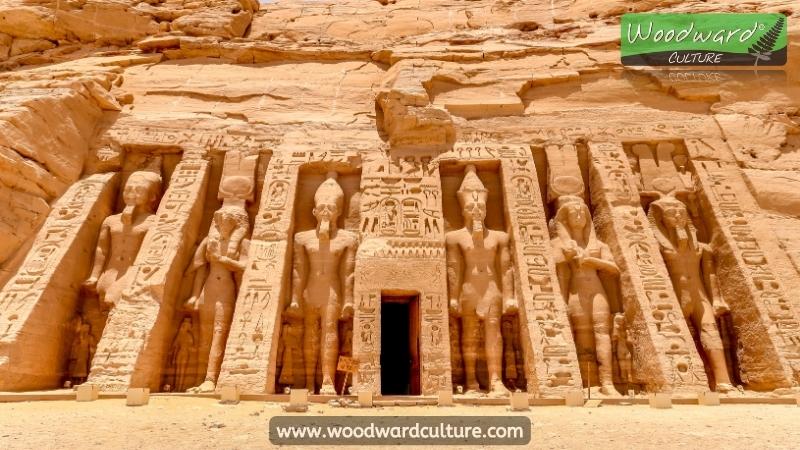
The Sun Festival
One of the most remarkable aspects of Abu Simbel is its alignment with the sun. Twice a year, on February 22 and October 22, the sunlight penetrates the temple’s inner sanctuary, illuminating the statues of the gods seated within. This phenomenon symbolizes the birthday of Ramses II (February 22) and the anniversary of his coronation (October 22). The event attracts crowds of tourists and locals alike, celebrating the ancient solar alignment.
How to get to Abu Simbel
The closest city, and place to stay, is Aswan about 230km (143 miles) north of Abu Simbel. There are many tour companies offering day trips to the temples but they all start at around 4am due to the 3.5/4 hour bus trip it takes to get there. On a group tour, you usually get 2 hours at the site and then another 3.5/4 hours coming back – feel free to snooze on the way back after the early start. There are some flights from Aswan to Abu Simbel (they take around 50 minutes) and you can also go via private car.
The Abu Simbel Relocation Project
The relocation of Abu Simbel is considered one of the most ambitious and successful archaeological preservation projects in history. It was undertaken in the 1960s to save the temples of Abu Simbel from being submerged by the rising waters of Lake Nasser, which was created by the construction of the Aswan High Dam.
Recognizing the historical significance of Abu Simbel, an international campaign was launched to save the temples from submersion. UNESCO, along with various countries and organizations, contributed to the rescue efforts.
The relocation process involved dismantling the temples piece by piece. Engineers and archaeologists carefully documented the position of each block and carved element. Over 2,000 massive stone blocks were numbered and cataloged. The temples were then transported to a higher plateau about 65 meters (213 feet) above their original location. The new site was carefully chosen to replicate the orientation of the original temples with respect to the sun, ensuring that the solar alignment phenomenon during the biannual sun festivals would still occur.
The relocation presented numerous technical and logistical challenges. The immense size and weight of the stones, some weighing up to 30 tons, required specialized equipment and careful planning. Additionally, the structural integrity and aesthetic qualities of the temples had to be maintained during the reassembly process. The relocation of Abu Simbel was successfully completed in 1968. The project received widespread acclaim for its technical prowess and commitment to preserving cultural heritage. UNESCO designated Abu Simbel as a World Heritage Site in 1979.
Remarkably, the relocation preserved the solar alignment phenomenon, allowing sunlight to penetrate the inner sanctuary of the Great Temple on February 22 and October 22, which correspond to the birthday of Ramses II and the anniversary of his coronation.
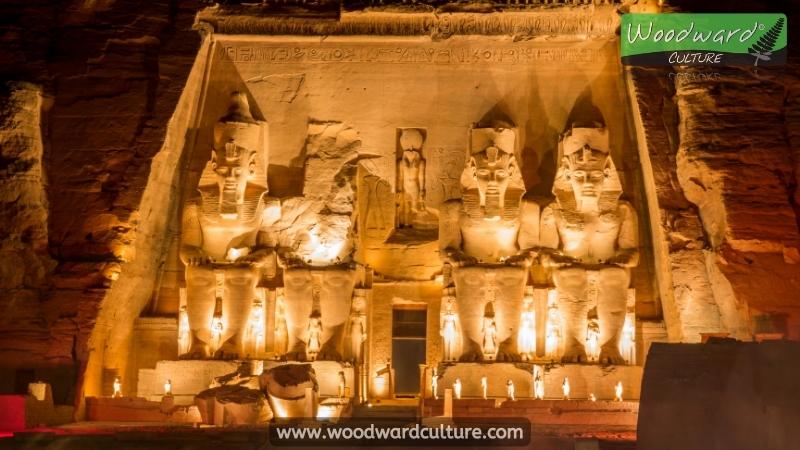
Abu Simbel Today
Today, Abu Simbel continues to captivate visitors with its colossal statues, intricate carvings, and the dramatic story of its relocation. Tourists can explore the temples, marvel at the colossal sculptures, and immerse themselves in the history and artistry of ancient Egypt. The site’s remote location adds to its mystique, offering a unique and awe-inspiring journey for those who make the trek to southern Egypt.
Abu Simbel stands as a testament to the grandeur of ancient Egyptian civilization and the remarkable efforts undertaken to preserve its cultural heritage. It remains a must-visit destination for history enthusiasts, archaeologists, and anyone seeking a profound connection with the wonders of the past.



